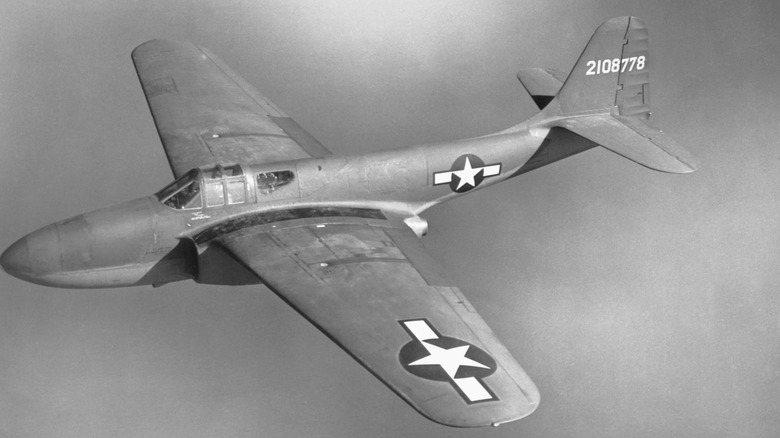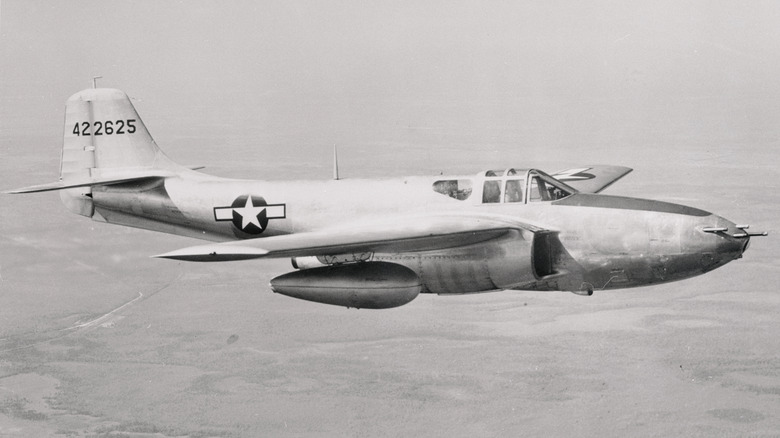The Story Of The First-Ever US Fighter Jet
When the Wright Brothers proved the viability of powered aircraft in 1903, it didn't take long for the technology to make its way to the military. Throughout World War I, aviators around the globe operated complex aircraft capable of firing machine guns and dropping bombs. As time passed, the technology improved, but throughout most of World War II, aviators continued to fly planes driven by propellers, as the technology had been around for nearly half a century.
Propellers are fine when you're in a dogfight against relatively slow-moving aircraft, but the advent of jet propulsion technology was a gamechanger on par with the Wright Brothers' first flight. Jets can push aircraft to breakneck speeds, and the development of the technology started to show results in 1939. It took some time before jet-powered aircraft found their way into the battlespaces of WWII, though more and more appeared toward the end of the conflict.
While Germany invented the technology, it wasn't the only nation working on it during its nascent phases. By 1942, the United States developed its own jet aircraft, the Bell P-59 Airacomet. While she didn't enter combat during WWII, and only 66 were built, the Airacomet was the first successful production jet aircraft operated by the U.S. Army Air Forces, the United States Navy, and the Royal Air Force. The Airacomet wasn't the most impactful jet aircraft of WWII, but her development paved the way for all American jets to follow, making it one of the most important aircraft in U.S. history.
The Bell P-59 Airacomet
The plan to build an American jet aircraft began in 1941 after the U.S. acquired a British Power Jets W.1 engine. With new technology in hand, plans arrived at General Electric. The American version was dubbed the General Electric I-A. Bell Aircraft was tapped to develop different jets using the engine, and the company developed 13 prototype aircraft designated P-59/A, XP-59A, and YP-59A. These were put through testing and flight demonstrations before delivery to the military, which began in July 1943.
The Bell P-59 Airacomet was a marvel of modern military aviation, but it wasn't comparable to the more battle-tested P-51 Mustang, Lockheed P-38 Lightning, or Republic P-47 Thunderbolt. The Army initially ordered only 100 Airacomets, which could fly up to 409 mph at an altitude of 35,000 feet. It also featured a pressurized cabin, metal skin, and a single 37 mm cannon with three .50 caliber machine guns. The Airacomet had several issues identified through its testing phase, and its inability to match its predecessor's abilities ensured it never saw combat.
It was clear that further development was required to bring viable jet aircraft technology to the front lines. While the P-59 Airacomet didn't meet expectations of the nascent technology, it paved the way for the jets that followed. The military decided not to proceed with the P-59 and instead focused its attention on the Lockheed P-80 Shooting Star, which ultimately became the United States' first operational jet fighter.

